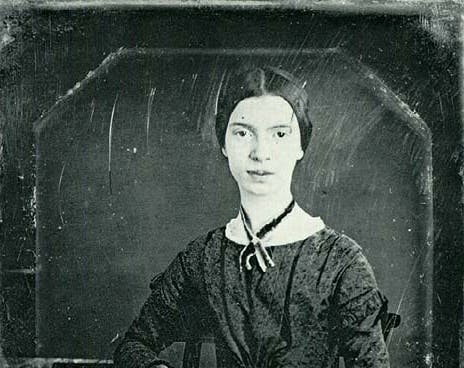Emily Dickinson at Home
Martha Dickinson Bianchi’s portrayal of her aunt, first published in 1932, has the same quality of furtive, elusive, and yet revelatory promise that distinguishes Emily Dickinson’s poetry.

‘Emily Dickinson Face to Face’
By Martha Dickinson Bianchi
Foreword by Anthony Madrid
McNally Editions, 112 pages
This memoir, by Emily Dickinson’s niece — first published in 1932, and out of print for decades — is a wonderful example of how biography can illuminate the life and work of an artist even when the artist’s work is not directly addressed, or made the subject of literary criticism.
Martha Dickinson Bianchi’s portrayal of her aunt has the same quality of furtive, elusive, and yet revelatory promise that distinguishes Emily Dickinson’s poetry. Here, for example, is her niece watching the poet cook: “She was rather précieuse about it—using silver to stir with and glass to measure by.”
That Dickinson cooked as an artist is clear when Bianchi observes: “Her technique was as precise as that of a musician playing scales.” Dickinson’s imagination is on full display when Bianchi recalls that she “never gave herself a chance to get a quarter of a teaspoon of Eternity in by mistake, as she gravely explained, though I caught a twinkle in her eyes.”
Isn’t this the very experience of reading a Dickinson poem, which can seem both serious and yet comic — even whimsical at the same time? Eternity, by the way, is a refrain in Bianchi’s memoir, as it was for Dickinson, “not as an abstraction,” Bianchi notes, “but a further phase of life and love.”
Something childlike in Dickinson came out when she dealt with children, sharing their joys and keeping their secrets. She never seemed strange or aloof to her niece. That her aunt would seclude herself in her room to write seemed normal — not an aberration the family commented upon.
It was Dickinson’s community that treated her as a freak. They would visit hoping to get a glimpse of the reclusive poet and come away disappointed, unable to obtain a sighting of the poet or even a word about Dickinson out of the niece or anyone else in the household. Bianchi’s grandfather (Emily’s father) had simply said that what Emily did, or what anyone else did for that matter, was their own business.
That Emily Dickinson preferred to dress in white almost all the time did not seem unusual to Bianchi, even though it generated gossip in the neighborhood. Dickinson’s family understood that what she wore was a reminder to her of the man she had loved and lost because he was already married.
Bianchi recreates what it was like in a world without electric lights and modern transportation in a time when Emily Dickinson often communicated via notes to the family, which they treasured. They all knew she was writing poetry; what surprised them was how much — more than 1,800 poems were discovered after her death that she had not cared to publish.
Bianchi quotes her aunt: “Publication is the auction/ Of the mind of man.” Dickinson had plenty of opportunities to publish. In fact, publishers came calling, but only in a few instances were they able to filch a few poems that Dickinson rued to see in print.
Emily Dickinson did not stand apart from her family, Bianchi insists: “we never reasoned about her any more than how the tallest pine got where it was on the old driveway.” The Emily Dickinson who absented herself from the society of others was largely a product of the years after her father died, Bianchi reports. The poet was inconsolable, and Bianchi explains why.
Edward Dickinson was the center of home life. The Dickinson women made certain that when he returned from work, he would receive not only a warm welcome but in an atmosphere of accord, which often meant straightening up things as soon as he was observed on his way home. Bianchi presents such scenes with a tender, amusing tone, absent any hint of an oppressive patriarch.
Skip the Foreword to this book, unless you are such a Dickinson aficionado that every word about her has to be taken into account. Anthony Madrid’s remarks are mostly gratuitous. He supplies tittle about family scandal and contentions over the handling of Emily Dickinson’s poetic legacy.
What is missing, if a Foreword has to be provided for a memoir that is complete and satisfying in itself, would be some sense of the tradition of Dickinson biography, and where Bianchi’s memoir fits in.
Mr. Rollyson has co-authored with Lisa Paddock “Emily Dickinson: Self-Discipline in the Service of Art.”

